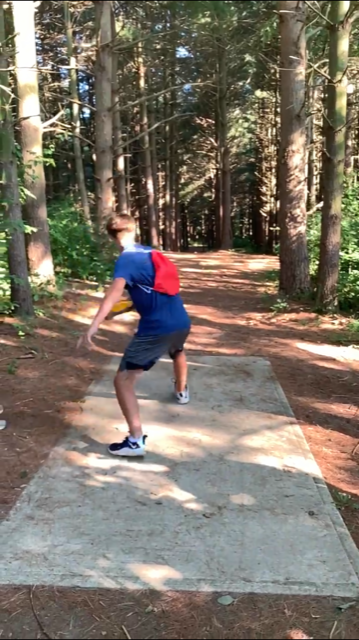
Frisbees were the rage in the 1970s and disc golf had not been invented. A lot has happened to that little round plate since then. Disc golf is spreading quickly for multiple reasons.
Social distancing is on everyone’s mind this summer and finding an appropriate activity can be a bit taxing. Hiking is always a great idea, but disc golf adds a bit of a twist. Many courses are set up in the woods, so you still get to enjoy nature while engaging in a little competitive fun. Additionally, once you have your initial equipment, the cost to play is very minimal since the courses are free to the public, unlike golf.
This post contains affiliate links – I may earn a small commission from qualifying sales.
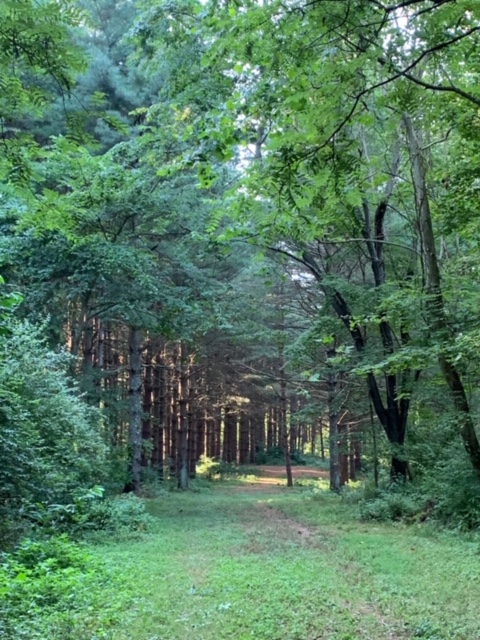
So, how exactly does disc golf work you ask? Great question! To me, it’s a glorified game of frisbee merging with the concept of golf. A basic set of discs includes a driver, a mid-range and a putter. Each of these discs has a different lip and a slightly different weight.
Scoring
There is a clearly marked tee box for each hole with a map of the hole you are about to shoot. Each hole is categorized as a 3, 4, or 5 par hole, just like in golf. One of the hardest parts of the game is keeping your disc from going in the brush/woods on each side of the fairway.
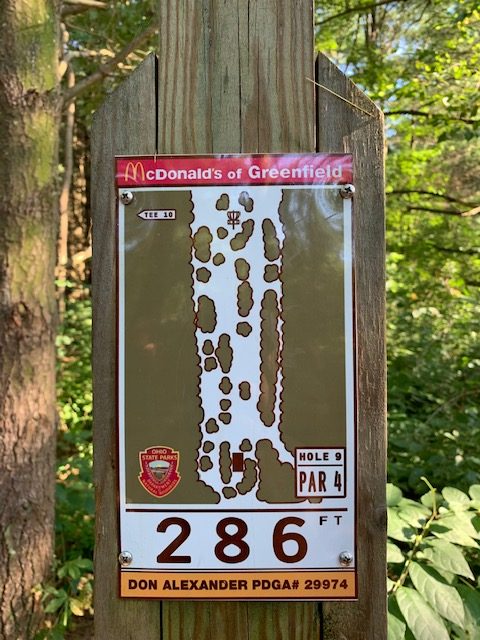
An example of a disc golf hole stating the distance, the par and a general view of the fairway. 
Playing the Course
Each throw happens from where your disc landed last, just like in golf. Trees, brush, fallen logs and the like are all part of the obstacles you must throw over and around.
The Target
Each course will have either a designated basket target or object target at the end of each hole. I’ve only played on basket target courses. Your turn comes to an end once you’ve successfully landed your disc in the chained basket.
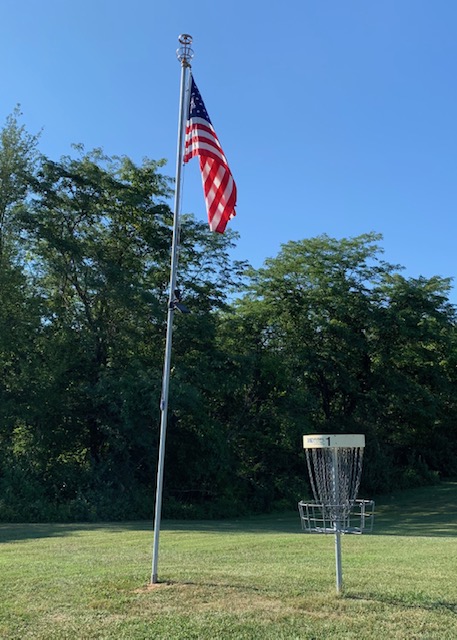
A disc golf basket target 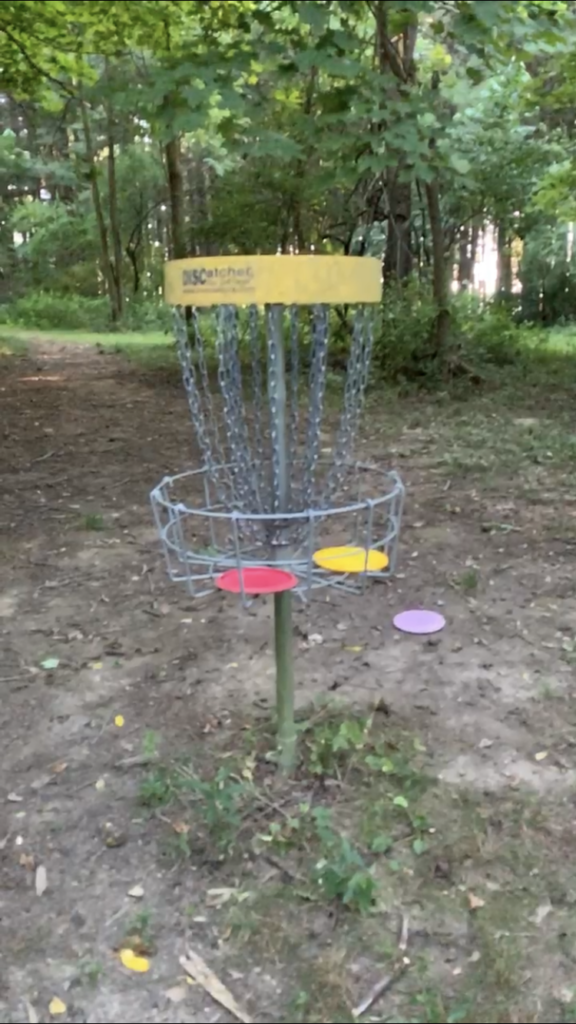
Supplies
Disc golf is a very inexpensive game to play for beginners and advanced players alike. You can actually play the whole course with just a mid-range disc when you first get started.
We stopped by Hocking Hills Disc Golf and purchased our starter discs. They provide very friendly service and they offer new and used equipment. $4 for a mid-range disc was quite a great deal in my book!
I suggest writing your phone number on the underside with a Sharpie just in case you aren’t able to find your disc. You never know when it might be found. If you do find someone else’s disc, be sure to contact the owner to see how it can be returned. It’s good disc golf etiquette.
If you plan to buy discs for your entire family, be sure to pick different colors. This will help keep things straight during game play. Also, choose bright colors for your disks. They will be much easier to find. Stay away from green, brown, black and camo.
Besides wearing comfortable walking shoes, other items you might want to consider include: a sling bag for extra disks, a hand towel (in case your disc ends up in a creek), snacks and something to drink.
Everything Official
Just like any other sport, there are official rules, etiquette of game play and equipment regulations. You can find a whole host of information on the Professional Disc Golf Association website. They also post tournaments and courses.
Do you want to sound really professional with all the correct lingo? Here’s a refresher course:
- Par: The amount of throws deemed correct for that hole
- Bogey: One additional throw over par
- Double bogey: Two additional throws over par
- Triple bogey: I think you get the idea 🙂
- Birdie: One LESS throw than par
- Eagle: Two throws less than par
- Double Eagle: Three throws less than par
- Ace: also referred to as a Hole-In-One!
Courses
Udisc is a great app to download. It shows a map of all the disc golf courses in the United States, along with the aerial view of the course itself. Once you log on to start game play, the app will keep track of your score and show you where you are on the course in case you need help finding the next tee.
Loving the Great Outdoors
Looking for other outdoor adventures? Check out my articles on camping and State Nature Preserves to get you going.
Please post in the comments below some of your favorite disc golf courses.